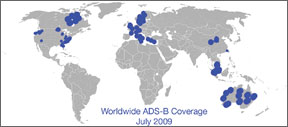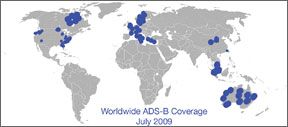So, there I was, droning along level at 9000 feet. I had just launched from Cheap Fuel Stop, Fla, on a non-stop IFR to Virginia. I was cleared direct Savannah, and was motoring off in that general direction, from southwest of Orlando. Miami Center had turned me over to Orlando Approach. It was a 288 typical Florida spring afternoon, with scattered white puffies in all quadrants, tops to about 7-8000 feet and smooth, clear air above. I was well inside Orlandos Class B by this time; the frequency was moderately busy. A few moments after checking in with Orlando, I was given a vector. The vector basically was direct to Orlando International Airport (MCO), after which I presumed Id get turned north and on my way. When ATC vectors an IFR flight, the controller is supposed to give a reason. It says so, right in FAA Order JO 7110.65T, Air Traffic Control, at paragraph 5-6-2.b.: “When initiating a vector, advise the pilot of the purpose.” Usually, of course, when receiving a vector for traffic, ATC will point out where the traffic is, its type, relative movement and its altitude (ATC, 2-1-21.). That wasnt the case this time. Ive seen this movie and pretty much knew what was going on-I was getting vectored to avoid the arrival/departure corridor at MCO. Shortly, I received another slight heading change. Acknowledging, I asked the controller where the traffic was. I didnt ask my question to pick a fight, but I was curious, just in case one of us had missed something. Rather than point out some traffic or simply advise the vectors were to ensure I stayed away from the corridor, I and everyone on the frequency were treated to a 10-second discourse on how the Orlando area had a bunch of jet traffic coming and going and climbing and descending, and the vectors were to keep me away from that traffic. The clear implication was I had no business being where I was (despite being handed off from Center on an IFR clearance). We both moved on and the rest of my flight to Virginia was uneventful. Putting aside the controllers overreaction, the issue here for me-as it should be for you-is twofold. First, lets use correct phraseology, please. The ATC order is 602 pages, much of them used to advise controllers and pilots alike of what to expect in both procedures and communications. Then, theres the Pilot/Controller Glossary, another 118 pages, containing definitions for all the words were supposed to be using. These and other guidance documents exist to help ensure everyone knows what to expect and there are no surprises. If the phraseology doesnt exist to advise a pilot when he or she is being vectored away from an arrival/departure corridor in busy terminal airspace, then perhaps it should be created. The second issue involves using the catch-all “traffic” as the purpose for the vector. Yes, in a very general sense, thats one of the things the vector is about. The other thing its about, of course, is the controllers workload and anxiety level: The further I am away from that corridor, the lower both values are. I have no problem with that at all. In fact, Id be extremely happy to not even be in your Bravo, sir, perhaps motoring up its west side, then proceeding on my merry way. But (you knew there was going to be a “but,” right?) I have an issue with being mushroomed-kept in the dark and fed manure-about whats going on in, around and with my airplane, and why. Giving traffic as a reason for a vector like this when theres no real or immediate conflict is misleading, unprofessional and a disservice. And we wont even go into your inappropriate response to a simple question. Flying a FLIB as I do, Im used to being mushroomed like this. It goes with the territory. But theres got to be a better way. ADS-B Math As this issue went to the printer, the FAA had just released its long-awaited final rule implementing one of its proposed next-generation ATC system pillars, ADS-B Out. Automatic Dependent Surveillance-Broadcast Out is the technology designed to transmit position and other data from aircraft to ground-based stations and suitably equipped aircraft. The final rule calls for airborne ADS-B Out equipment to be installed and operating by 2020 if an operator wants unfettered access to Class A, B and C airspace; all airspace at and above 10,000 feet msl; within the existing Mode C veil and over the Gulf of Mexico. The FAA estimated the total cost to equip general aviation aircraft from 2012 through 2035 would range from $1.2 billion to about $4.5 billion, with a mid-point average of nearly $2.9 billion. The agency estimates GA could receive up to $200 million in benefits from equipping with ADS-B Out. Even I ca do that math. Instead, the real benefits accrue to the FAA from eliminating ATC radars, controller jobs and retirement costs. Additionally, the airlines supposedly will find it cost effective through greater operational efficiency. With such a radically skewed cost-benefit ratio, many in GA are rightly asking, “Whats in it for me?” The answer is: continued access to airspace we presently can use with only a Mode C transponder. Presently, limited options exist for general aviation operators opting to equip with ADS-B Out. That will change soon, but it might not get cheaper. – Jeb Burnside




